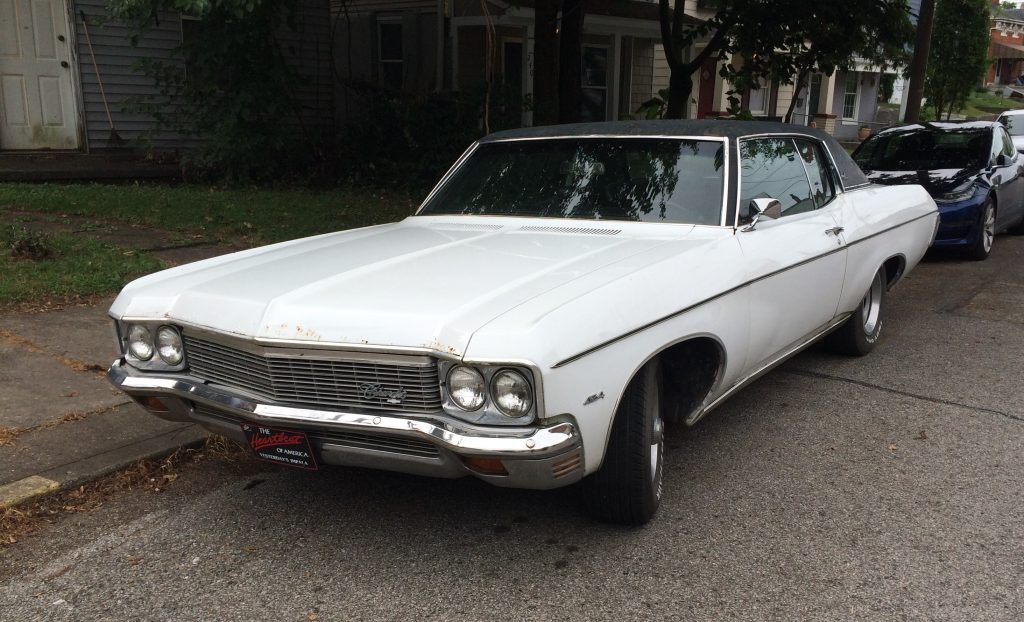
Recently, a friend of OnAllCylinders had the opportunity to buy a 1970 Chevy Impala coupe—and not just any Impala coupe, one with the relatively rare LS4 option which put a 454 big block under the hood.
Don’t confuse 1970’s LS4 with the newer LS4 engine from the LS family that came in the 2005-09 Impala SS.
While the Impala’s seller priced the car realistically and was extremely forthright about its condition, our friend asked us what he should check before deciding to buy it.
We gave him a list of 10 easy things to look for before buying an old vehicle, be it a car, truck, or SUV. We’ll list them here in order of importance—spoiler alert, quite a few involve investigating rust.
One final note before we dive in: While it’s always wise to conduct a more comprehensive inspection (involving a vehicle lift and engine diagnostics), many folks won’t have the time or resources to do it. That said, we compiled this list as a series of quick, easy things buyers can do in a driveway or parking lot to get a more complete picture of the car.
***
10 Things to Look For When Buying an Old Car
***
1. Structural (Frame) Rust
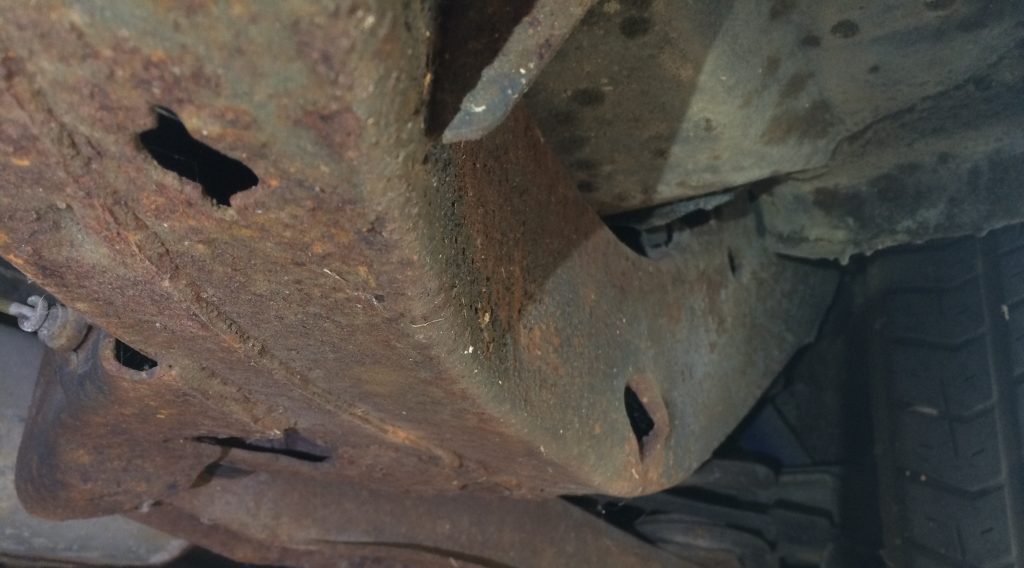
We could easily make all ten items on this list about rust and corrosion, but we’ll keep it broad and start with what’s most important. Structural rust occurs wherever rust or corrosion attacks a critical, load-bearing stress member of the vehicle’s body or frame. And it can be an absolute deal-breaker, unless you’re really handy with a welder.
For a body-on-frame car like our Impala here, inspect the frame carefully and don’t be afraid to scrape or press any rusty surface to sense the integrity of the underlying metal. Same deal with unibody cars—pop the hood, open the trunk, and roll around underneath, looking for rust on subframes, or near pinch welds, seam welds, and chassis mounts. For both vehicle types, pay special attention to areas where suspension parts connect, like shock towers, spring perches, and shackle mounts, as they often see the most stress (and can be the biggest problem areas).
Also, be acutely aware of fresh black paint underneath a vehicle. It’s easy to rattlecan chassis and frame parts to cover up corrosion issues. And it can get even worse when a heavy chassis undercoating is used. Be skeptical of a shiny frame on a car with rust everywhere else—which is why it’s important to physically press and poke the metal to gauge its integrity.
Structural rust doesn’t just affect stuff underneath the car either. Windshields and body pillars are often structural components as well. On a convertible, don’t be afraid to grab the windshield frame to see if there’s any wiggle. Rusted (or bent) B- and C-pillars, particularly on unibodies, could point to serious structural and chassis alignment problems too.
Oh, and don’t forget to bring a flashlight!
2. Visible Body or Surface Rust
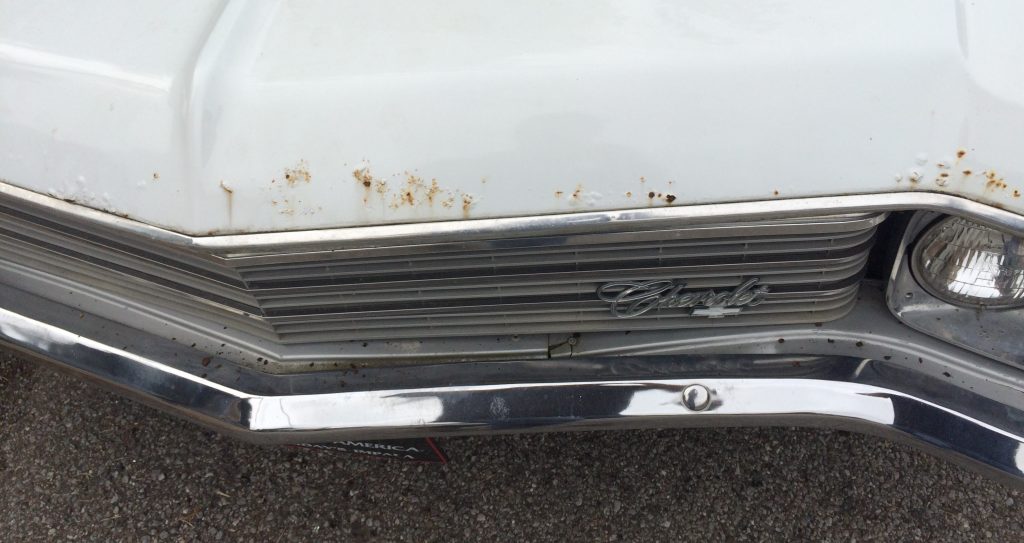
While not quite as serious as structural rust, surface rust can still be really expensive to repair—particularly if you’re farming out the work to a body shop. And you should be mindful that these spots should be fixed before they develop into bigger problems. Small discrete rust spots can be dealt with individually, but a collection of spots all over the body may demand a complete strip-down and repaint, which can be both costly and time consuming.
Once the rust perforates the sheetmetal, it’s no longer just surface rust. Any rust holes need to be dealt with quickly, as they can grow quickly to affect the structural integrity of the vehicle body.
Again, if you’re handy with a grinder, sanding block, and spray gun, rust spots may not be a big deal, especially if they’re localized. But remember, where there’s surface rust, there may be more lurking underneath, which brings us to…
3. Bubbles, Bumps, Paint Cracks, Discoloration & Stains
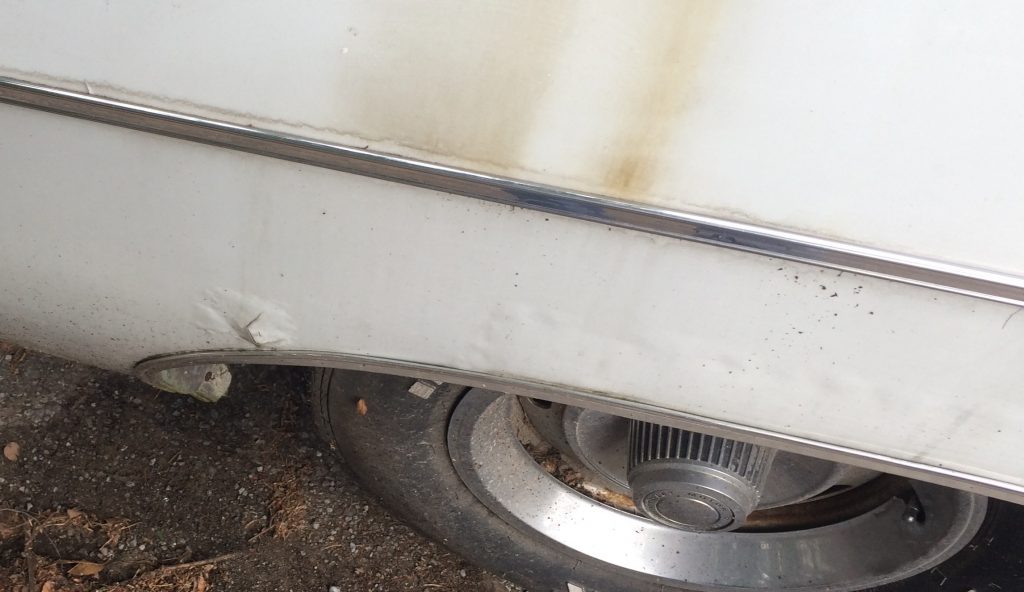
Rust is sneaky. It’ll creep underneath paint and hide behind trim, vinyl tops, and carpeting, which can cause all sorts of headaches when you go to do body repair. But there are some telltale signs to look for.
For starters, bubbled paint on an older car almost always indicates rust or corrosion underneath. Sometimes the bubbles get large enough to crack the paint, exposing the sheetmetal. Either way, it’s something that should be addressed before the rust gets worse.
Brown rust stains can point to corrosion under vinyl tops, or behind emblems and trim, while cracking paint can be a sign of body filler concealing a prior repair. (Body filler can absorb moisture, and may contract/expand with temperature changes differently than sheetmetal, which over time, often results in cracking, flaking paint.)
Speaking of filler, when going to inspect a car, bring a small handheld magnet with you. By gently securing it to the body, you may be able to sniff out areas where the sheetmetal has been worked over (or replaced entirely) by generous amounts of body filler.
In the best sunlight you can find, put your face alongside the flanks of the vehicle, looking for body waves and ripples. Admittedly, no unrestored vintage factory-made car will be perfect, but it can help reveal hidden rust spots as well as more serious body or frame issues. This tactic can also draw out paint mismatches or other evidence of prior body repairs.
4. Door/Panel Gaps, Plus How the Doors, Hood & Trunk Close
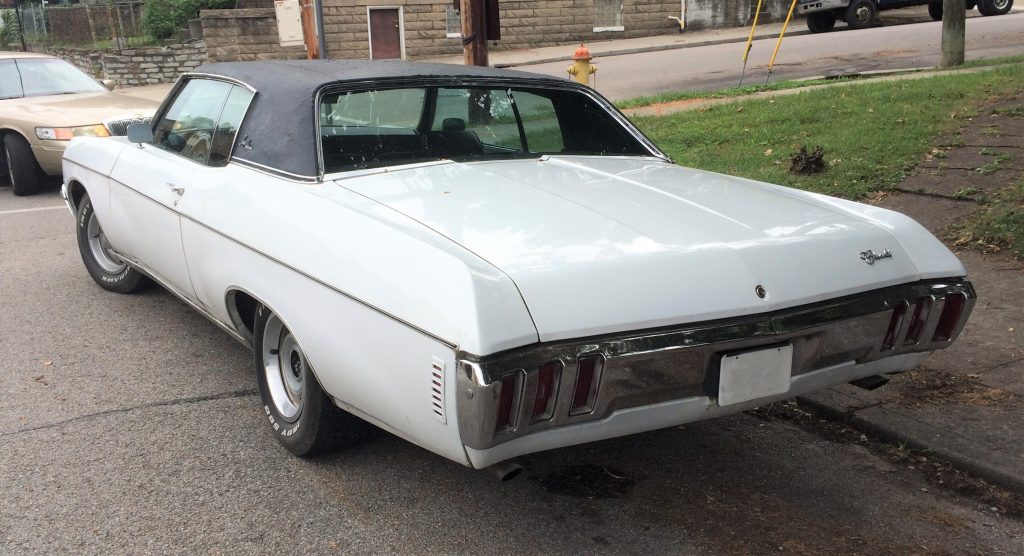
OK, realistically, there are going to be inconsistent panel gaps and sagging doors on any mass-produced, unrestored vintage car. But if you notice that doors are way off and aren’t lining up, the hood doesn’t close properly, or there’s rubbing against body panels, it could be a sign of prior damage, or a body or frame that’s suffering excessive structural rust fatigue.
Have a long framing level? While it’s not a perfect test. laying it across a bumper or pressing it up against the bottom of a crossmember can tell you if there are potential frame/chassis issues too. This tactic is particularly handy on trucks and Jeeps with easy access to the frame. Just make sure the vehicle’s parked on a level surface and its tires are evenly inflated first.
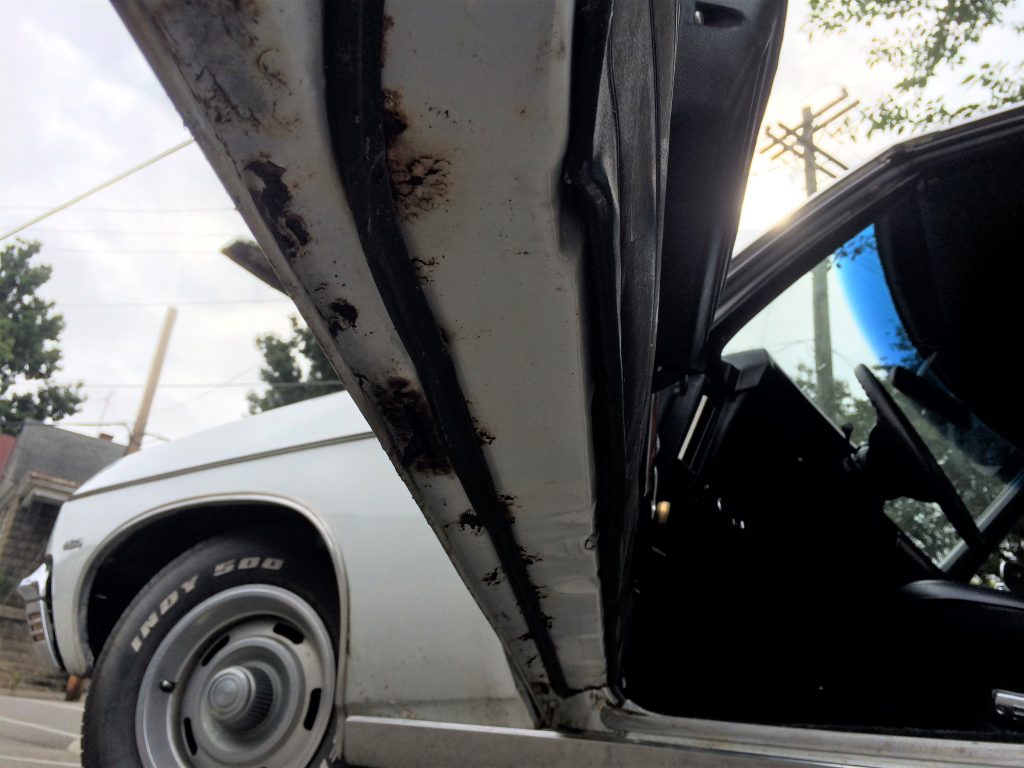
Take a look around the doors too, as they’re a common place for rainwater to collect and enter the vehicle cabin. Doors are also notorious for retaining water and can rust from the bottom up, and inside to out.
5. Interior Odors & Discoloration
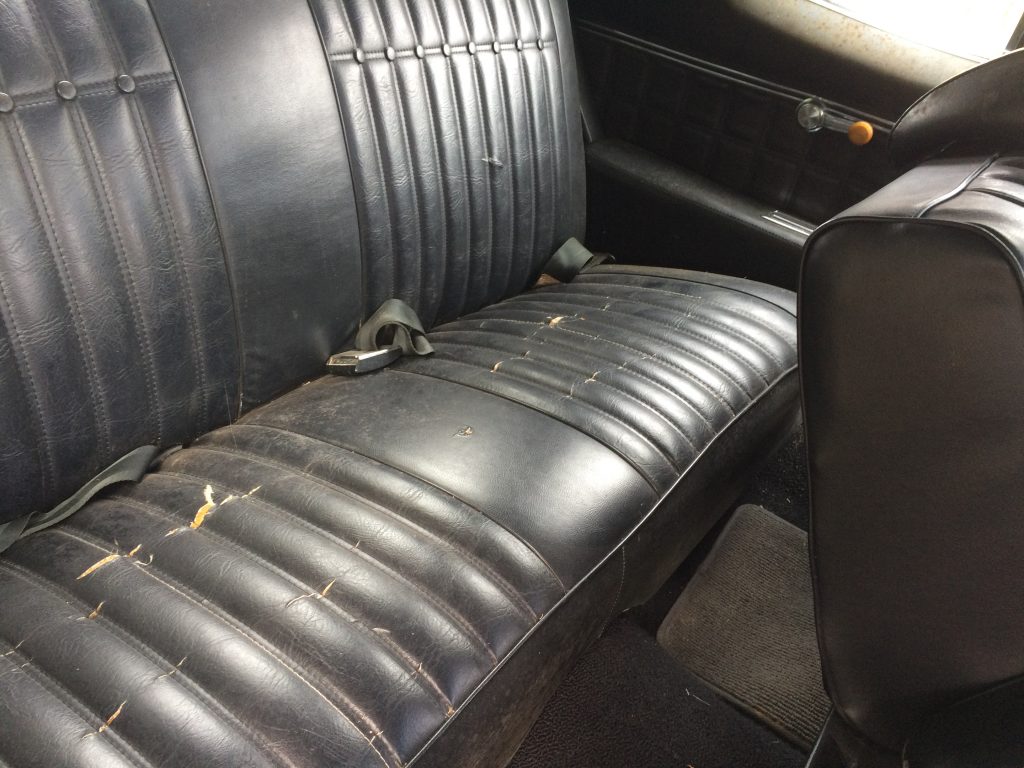
Look, any old car is going to offer up a delightful bouquet of degassing vinyl, gasoline, and (in all likelihood) stale cigarettes.
But if you notice a strong mildew odor, or any funk that’s reminiscent of a trout farm on a hot day, then it could mean that water’s been getting in somewhere. And when water gets into carpet, it likes to stay there and rust-out the metal underneath—so don’t be afraid to pull back the carpet and look for signs of corrosion.
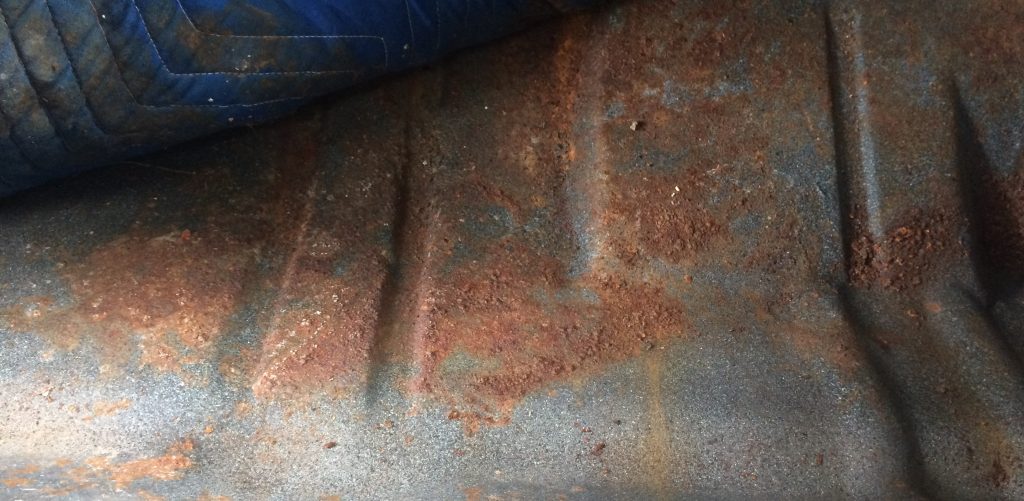
And don’t just stop in the passenger compartment, check the trunk and, for ragtops, inside the convertible boot. These are places where water can get in and stay. Again, your nose can help you literally sniff out problem areas.
6. VIN Plate, Cowl Tag, Title & Maintenance Records
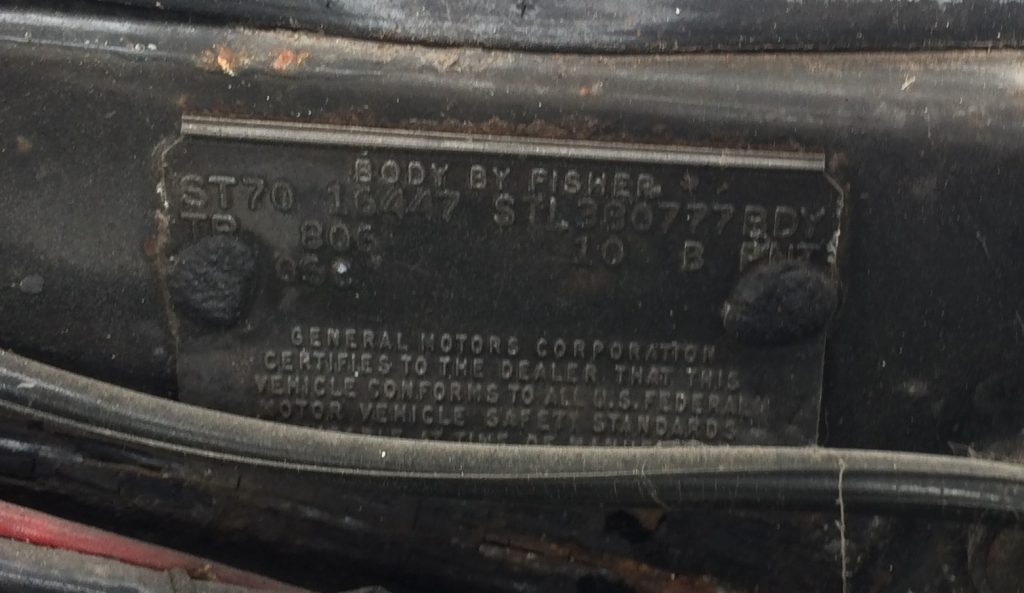
It may sound obvious, but check to make sure the vehicle has a VIN plate—and it matches what’s on the title. From accidental to nefarious, there are tons of reasons why a car may be missing a VIN plate, but good luck getting your car titled and registered without it. And in the excitement of a sale, it’s often overlooked. So make sure to check before you drop any cash. The VIN plate is often tucked up against the windshield on the driver’s side of the dash pad or somewhere on the front cowl.
The cowl tag will likely be under the hood, on the driver’s side of the firewall. It contains a trove of valuable information like the car’s original paint color code, body style, (body) build date, and which factory it came from. So it may be a good idea to cross-reference what’s on the plate with the actual car. For instance, the Impala’s paint code is “10” here, denoting Chevy’s “Classic White,” so that checks out.
And in addition to the vehicle’s title, if the previous owner can produce a stack of handwritten notebooks full of oil change logs, service receipts, and original documentation, then that goes a long way to telling you how they’ve likely cared for the car. A lot of folks would prefer a higher-mileage vehicle with excellent service records over a low-mile one with an unclear maintenance history.
In the case of the Impala here, the owner even had the car’s Protect-O-Plate issued by GM at the time of the original sale—a nice touch that helped validate the car’s provenance.
7. Abnormal Engine Noises & A Warm Engine
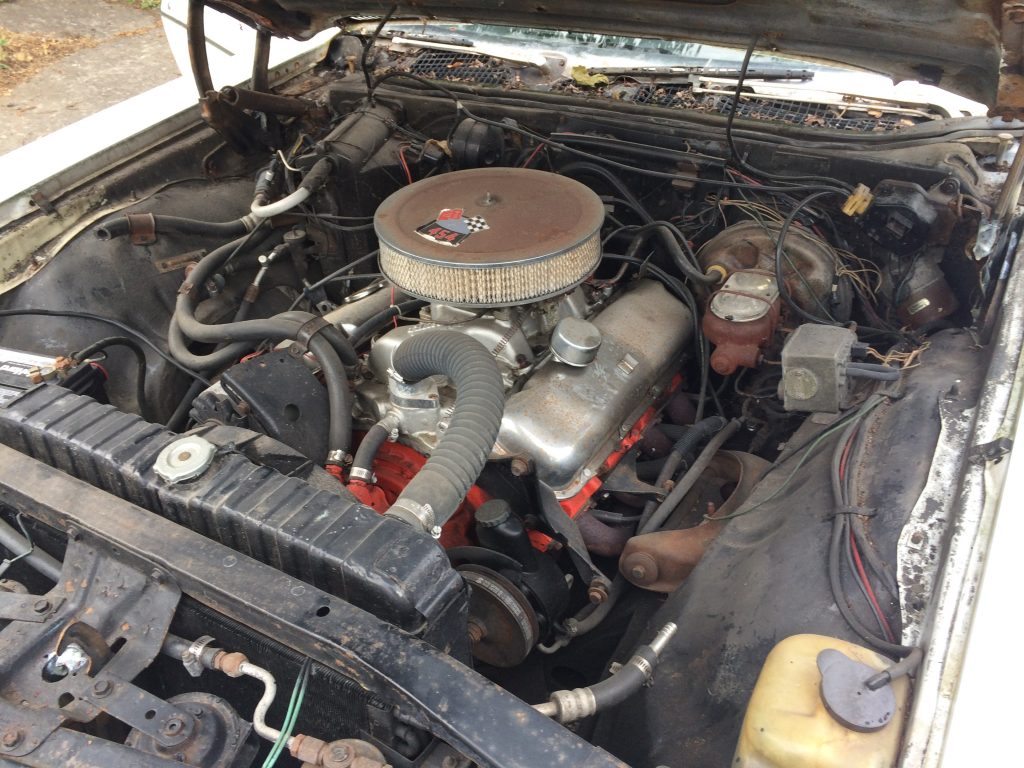
First off, when going to look at a vehicle, ask the seller to not start the engine beforehand, even if it is simply to move the vehicle to a more viewable position. This will let you see how well the engine starts and runs while cold, which can tell you about the condition of the fuel system, carburetor, ignition system, and a host of other critical engine components.
Once the engine is started, check for any unusual sounds. Admittedly, we could devote an entire article to diagnosing engine noises (Oh wait, we did!), but in the name of brevity, if it sounds bad, it’s probably bad. Knocks, pings, stutters—those are all indicators of something awry in the motor. Some issues are serious and require a rebuild, some can be fixed with a two-minute timing adjustment. We’ve got a handy engine noise infographic that can help you make a diagnosis.
One of the indirect takeaways here is that engine/transmission health really isn’t as important as the condition of the vehicle’s body or frame—unless you’re doing a numbers-matching restoration. That’s simply because, generally speaking, engine issues are far easier to fix than, say, a bent or broken frame or rust-perforated body. A competent shop can do a basic engine/transmission swap in a matter of days, whereas major bodywork and rust repair can take months.
8. Random Loose, Damaged, or Dead-End Electrical Wiring

Even with a bone-stock wiring harness, troubleshooting electrical gremlins can be an aggravating process. And it’s exponentially worse when you’re dealing with hacked-up, unlabeled, or otherwise modified electrical wiring.
Make sure to roll under the vehicle’s dashboard to look for random, dangling wires, and other clues to a non-factory job, like excess electrical tape, hardware store wire nuts, and wires that look newer than those in the rest of the harness.
Over the course of a vehicle’s life, it’s not uncommon for folks to install an aftermarket radio, auxiliary lights, and other electric accessories—which are often hastily removed, leaving a trail of spaghetti in their wake.
Also, remember that factory wiring is typically run in a protective loom and tucked neatly out of the way. So if you see wires run outside of the loom, or haphazardly stretched across wide spaces (or pulled taut), then it’s probably not original.

And that’s true in the engine bay as well. Many older points-style cars get retrofitted with digital ignitions, which requires some supplemental wiring. Even if the system works, taking note of how carefully the wires are installed and routed can help you avoid electrical issues later (and offer a clue to the competency of whoever did the retrofit job).
Bottom line, when you inspect the car, test all the electrical systems: headlights, HVAC controls, turn signals, windshield wipers, clock, radio, trunk solenoids, horn, etc.
9. Missing Emblems, Trim & Accessories
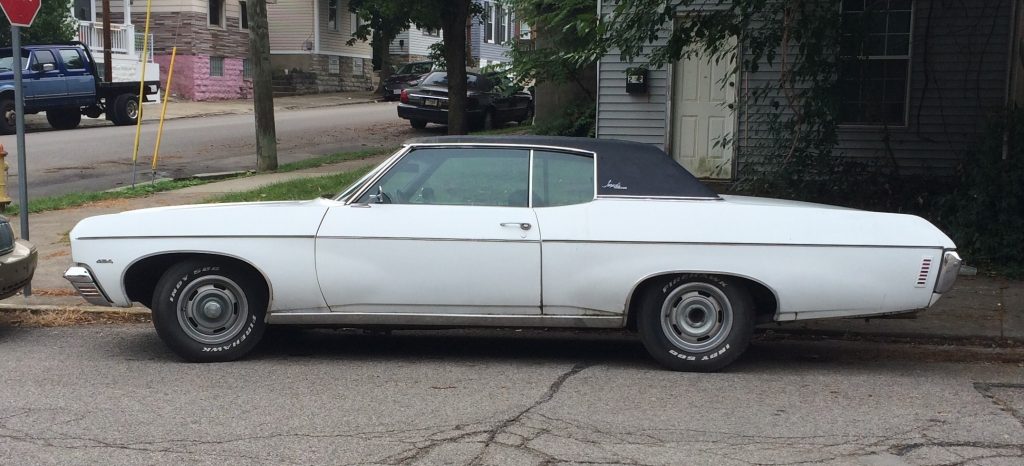
While it may not be detrimental to the function of the vehicle, replacing original trim parts can get expensive quickly. And it may be downright impossible for vehicles with low production numbers or that were part of a limited edition series. With all the focus placed on rust and mechanical issues, it’s easy to overlook the cost of replacing something as simple as an emblem.
When you’re looking inside the vehicle, take note of anything that’s missing or out-of-place. Air vent louvers, radio knobs, steering wheel emblems—they can be very difficult to find and replace, adding some significant cost to any restoration.
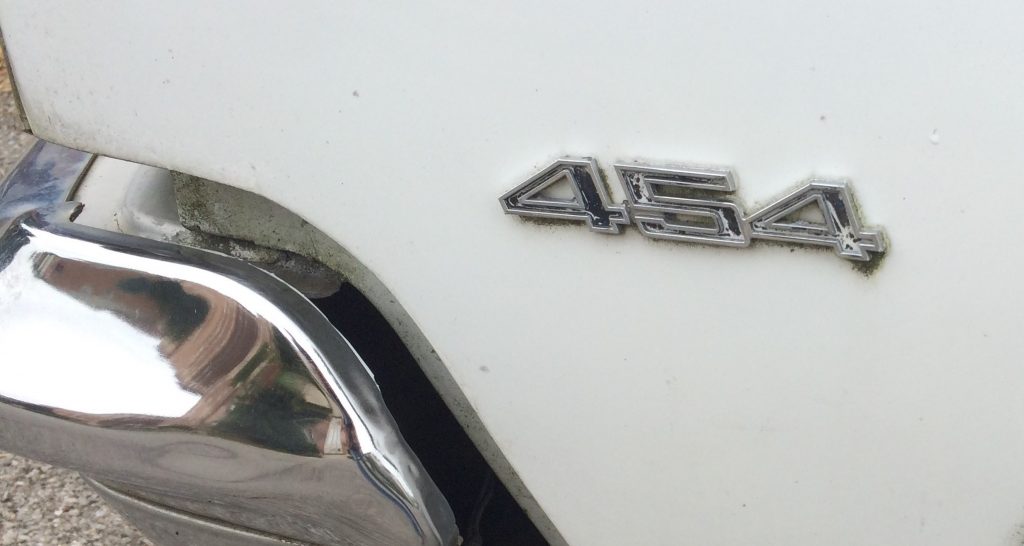
In the same vein, if the car or truck has any special features, check those systems out too. For instance, this particular Impala had an OE factory rear window defroster, so we made sure that it was intact and serviceable.
10. Trouble Spots Unique to the Vehicle
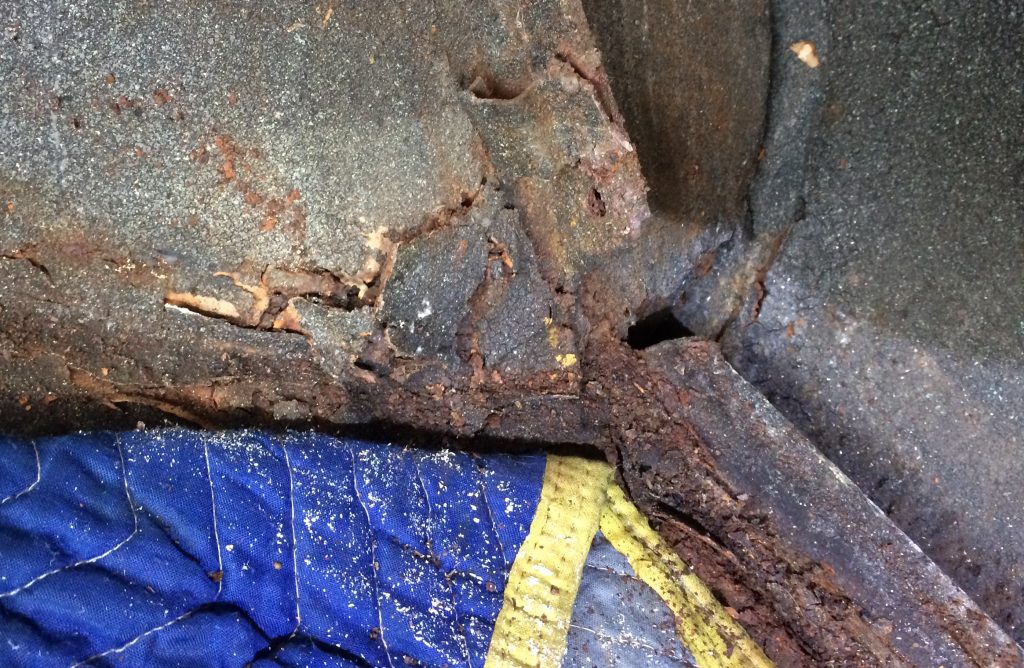
It should go without saying, but research the car you’re buying before looking at it! All models are unique and many have specific issues that aren’t shared with other vehicles.
Take rust for example. Fox Body Mustangs tend to rust around the front shock towers. VW Beetles rust at the heater channels. C3 Vettes rust around the windshield frame/birdcage. And so on. Spend some time researching your car online and you’ll likely figure out where the vehicle’s most rust-prone areas are.
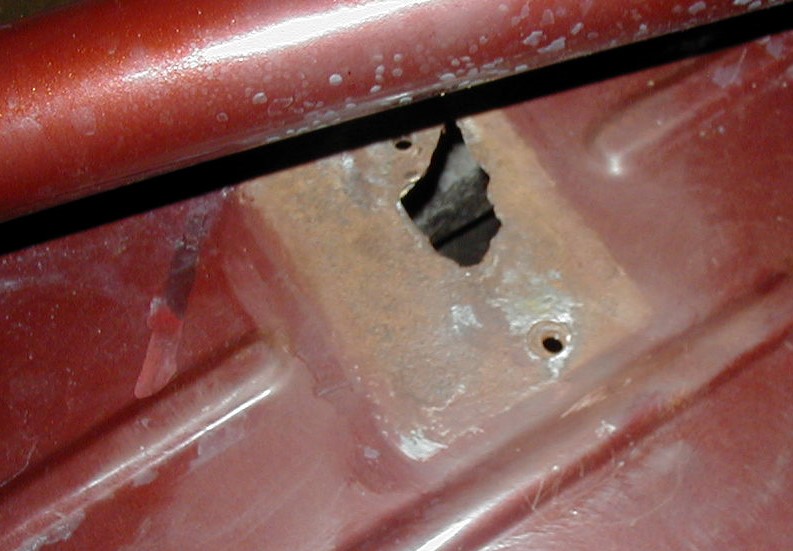
That doesn’t just mean rust either. Vehicles can have unique mechanical issues that are difficult or costly to repair (which often become the owner’s secret reason for selling the car).
Like, ever try replacing a heater core in a Z32 Nissan 300ZX? It’s not fun, so if you’re looking at one with a bad heater, be prepared to yank the dash to fix it.
Another perfect example is specific Porsches made around the turn of the century. Certain 911 (996/997) and Boxster (986/987) engines had an intermediate shaft bearing (IMS) that could fail, causing catastrophic engine damage. Shopping for one of those cars? Plan on asking a lot of questions about the IMS issue.
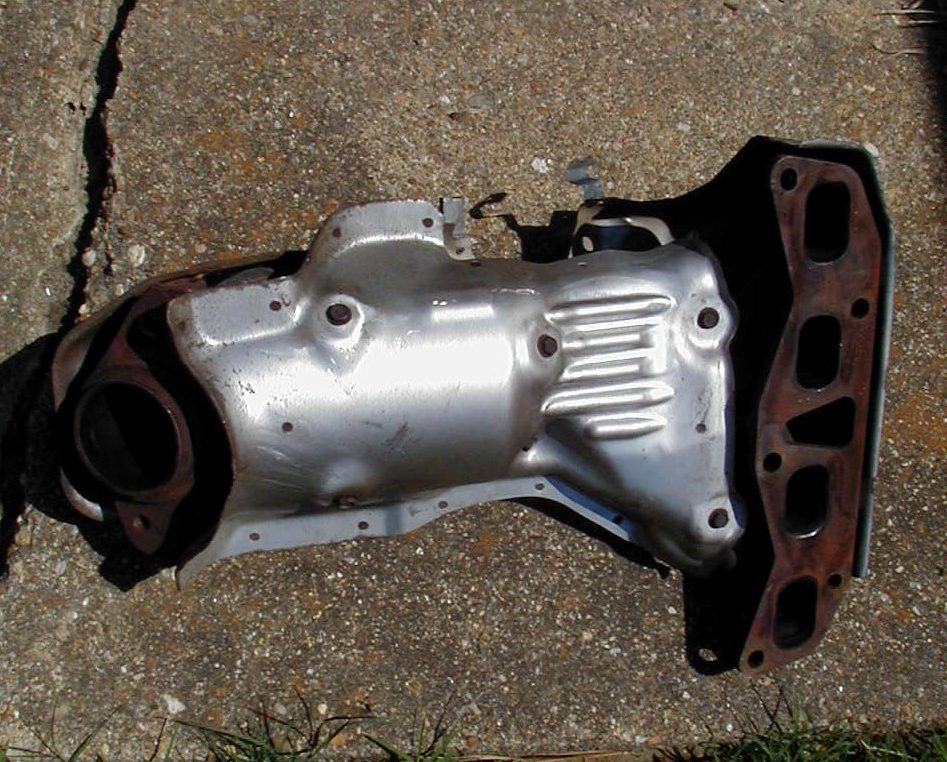
***
Ready to Get a Classic Car?
While buying any used car (vintage or late model) is a gamble, you can mitigate some of the risk with a little bit of research and a quick inspection. While we could’ve easily added 90 more items to this list, the 10 outlined above are a great, easy start for those unfamiliar with older vehicles.
Do you have any other tips to share? Let us know in the comments below.

how about the 66-ish impalas that the frame would rust right ahead and into the rear wheel arch.
where is adventure